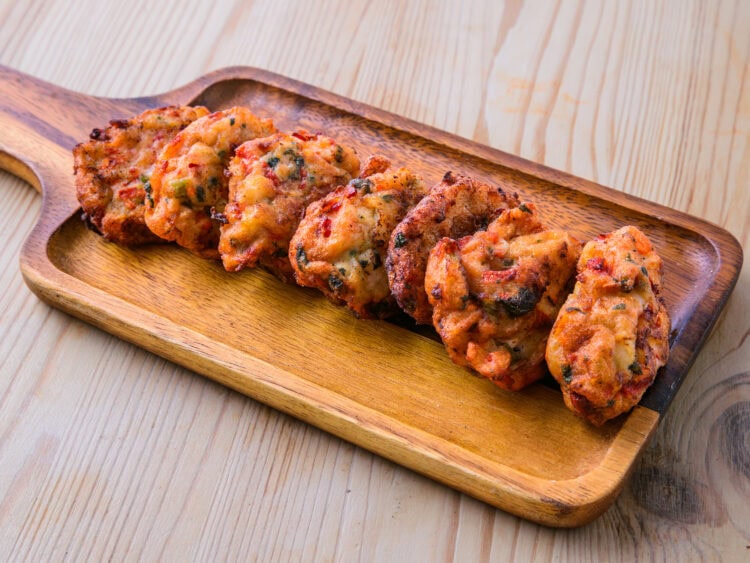A super simple recipe to make your own Korean fish cakes at home
On a January morning on a Busan avenue, briny steam wafts from a stainless steel cart, fogging the vendor’s glasses and enveloping passersby in a marine aroma. Schoolchildren stick wooden skewers into a cup containing an anchovy broth, break off a soft ribbon of fish cake, then warm their hands around it.
For many Koreans, the scene is the “instant equivalent of” a comfort food, as nostalgic as “a jar of grandmother’s kimchi. At the center stands” eomuk: Busan’s artisanal and seafood-rich answer to “Japanese oden. More than” a snack, these golden and elastic cakes have become a civic emblem. Their story: how a port city transformed bycatch into industry, how artisans achieve that characteristic chew from simple fish, and how home cooks perpetuate the tradition, offers a vivid window into Busan’s resilient palate.

Origins of Korean Fish Cake
Eomuk arrived in Korea with Japanese oden during the colonial period, and Busan’s first fish cake factory was established near the Bupyeong market at that time. After the Korean War, waves of refugees flocked to the port city in search of affordable protein; small workshops like Samjin (founded in 1953) and Donggwang rose to the challenge: they ground pollock with salt and starch before frying this paste to make an easily transportable food.

The idea, however, was not entirely foreign. An 18th-century royal banquet register mentions saengseon-sukpyeon, a molded delicacy made from minced fish, suggesting pre-modern Korean roots.
By the late 20th century, Busan’s frying artisans had set the national standard: today, over 95% of Korean fish cakes are fried, a method popularized by manufacturers in the port city. Tourists queue for tasting tours, and Samjin’s museum displays brass mortars once used to pound fish by hand.
Preparation, Texture, and Authenticity
Quality begins at the grinder. Veterans sprinkle salt on the fillets before the first pulse, allowing proteins to unfold and intertwine into a sticky web. In Yeongdo’s old workshops, this paste is still slapped against steel vats by gloved hands, the rhythmic “poc” aerating and strengthening it. Modern factories rely on refrigerated grinders, but the principle remains: the colder and faster the grind, the bouncier the bite.
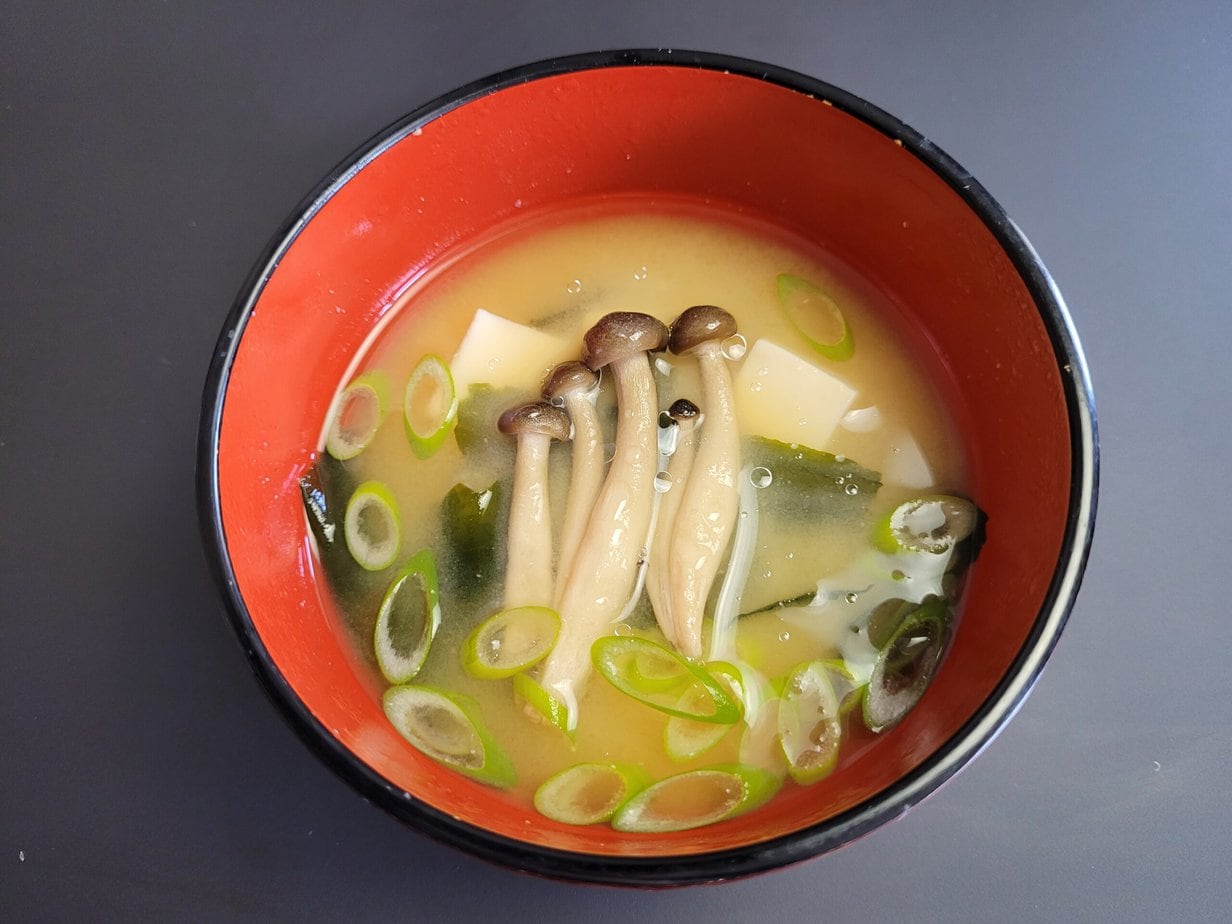
Shaping allows for creativity. Flat sheets for lunchboxes, accordions skewered on bamboo sticks for street carts, walnut-sized balls for winter soups: each shape undergoes a brief baptism in 170°C oil. The target is what Koreans call “탱글탱글”, an elastic crunch that resists the teeth then yields. Conveyor belts now float the cakes on rivers of oil, but Busan’s small-batch artisans still surpass industrial brands in this decisive chew.
How to Spot Quality when Buying Eomuks?
Turn the package over: a fish cake worthy of the name displays at least 70% seafood, little starch, and little or no added glutamate. Hold it up to the light: a quality eomuk shows a dense, fine crumb with very few air bubbles and only a golden halo on the edges. Bite into it: it should bounce back like al dente pasta, not crumble like bread.
Also be wary of marketing superlatives: “Busan” plastered on a package means nothing without a high percentage of fish or a lineage like Samjin or Hyosung.
The Main Ingredients of Korean Fish Cakes
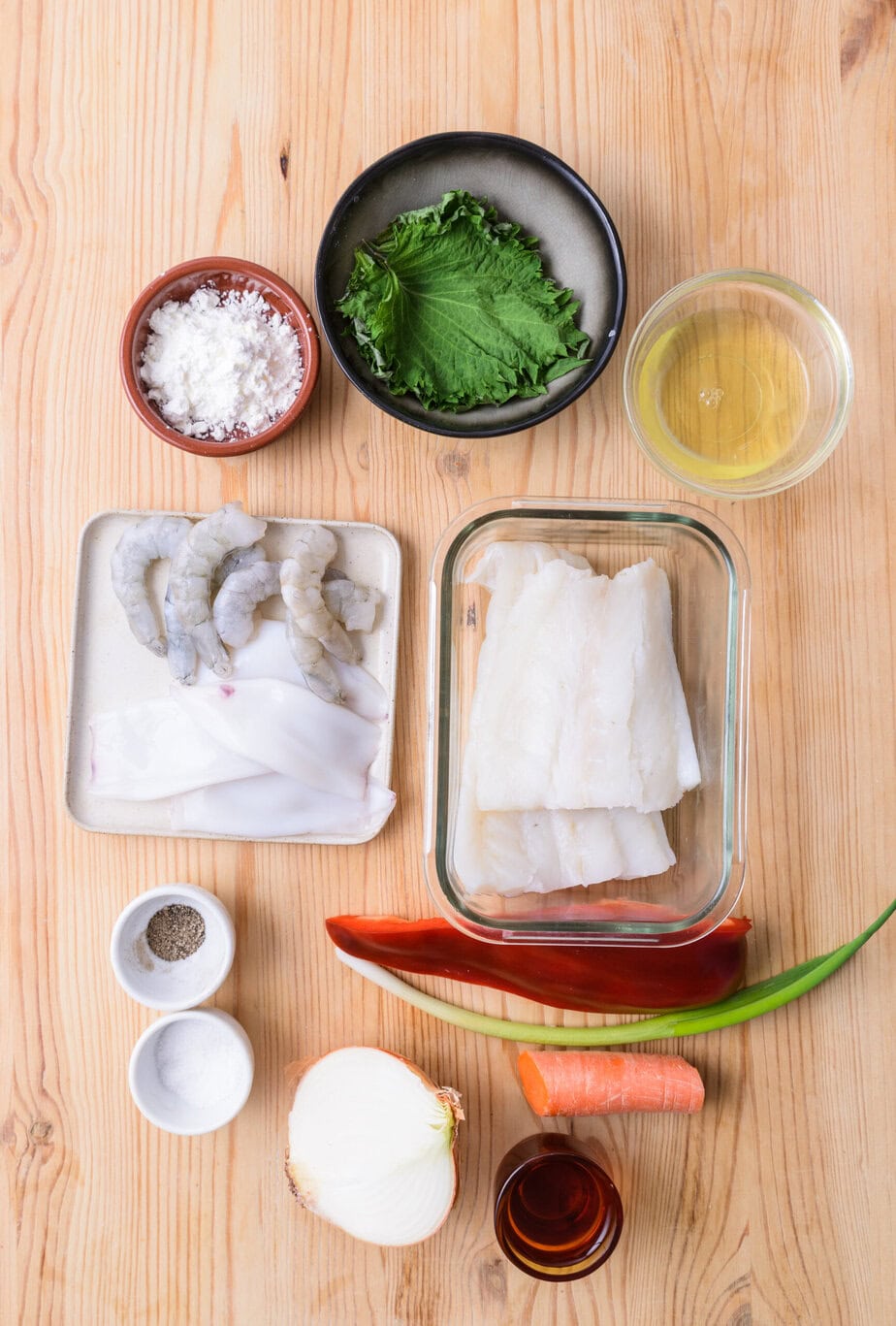
Fish: Cod is generally the most affordable option, but any white fish will do
Shaoxing Wine: Chinese rice wine often used in Asian cuisine, it adds depth and helps mitigate strong odors from fish and seafood.
Potato Starch: Light starch used here to bind the dough and make the croquettes soft.
Perilla Leaves: Also called shiso, they have a fresh, slightly minty taste that enhances the seafood mixture.
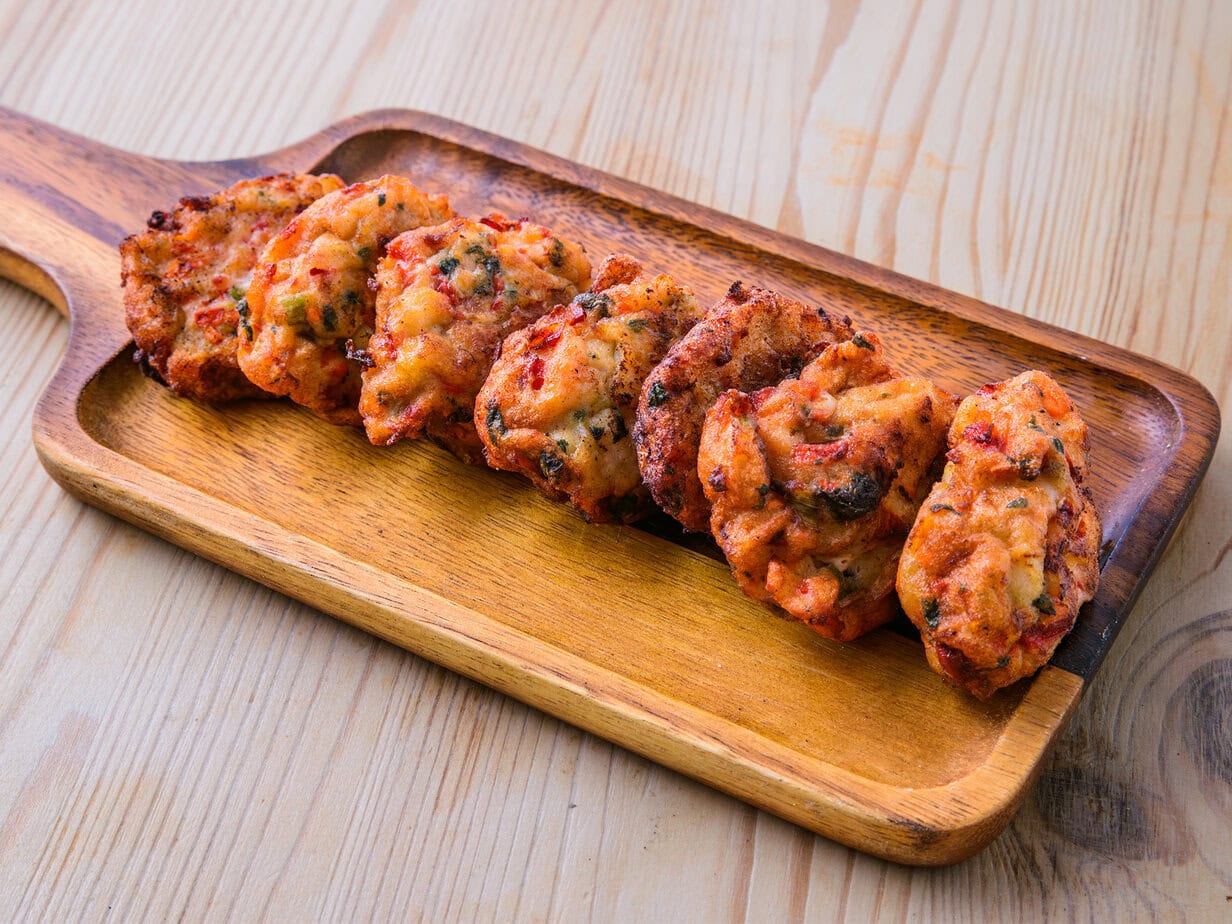
Authentic Korean Eomuk – Homemade Fish Cakes
Equipment
- Asian fried food
Ingredients
- 200 g of cod fillet
- 0.5 squid
- 6 shrimp raw and peeled/deveined beforehand if necessary
- 5 leaves of perilla
- 0.5 onion
- 0.5 green onion
- 0.25 red bell pepper
- 0.25 carrot
- 1 egg white
Seasoning
- 2 pinches pepper
- 2 pinches salt
- 1 tablespoon shaoxing wine
- 1 tablespoon potato starch
Instructions
Preparation
- Thaw the fish, squid, and shrimp if necessary200 g of cod fillet, 0.5 squid, 6 shrimp
- Remove moisture from the fish flesh with a paper towel
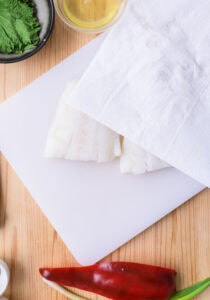
- Coarsely chop the fish
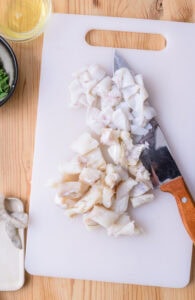
- Roughly chop the shrimp
- Cut the squid into small pieces
- Blend the fish, shrimp, and squid until a paste is formed

- Add pepper, salt, and Shaoxing wine to the paste and mix well2 pinches pepper, 2 pinches salt, 1 tablespoon shaoxing wine
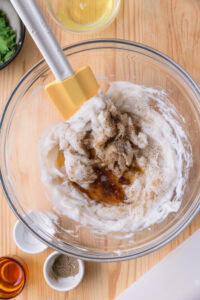
- Cut the perilla leaves, onion, green onion, red bell pepper, and carrot into very small pieces; they should be finely minced5 leaves of perilla, 0.5 onion, 0.5 green onion, 0.25 red bell pepper, 0.25 carrot

- Press the vegetables to extract as much moisture as possible
- Add the chopped vegetables to the mixture
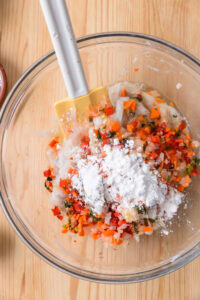
- Add the egg white and potato starch1 egg white, 1 tablespoon potato starch
- Beat the mixture well
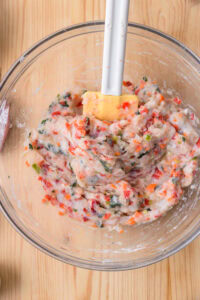
- Heat a large amount of oil to 150°C
- Scoop the paste with a spoon and shape the fish cakes
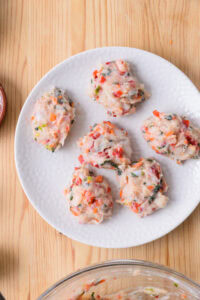
- Fry the eomuks until they are well-cooked on both sides

- Drain the fish cakes on a paper towel to remove excess oil

Notes
Nutrition
Culinary sources
- History and Origins of Busan Eomuk (Fish Cake)
- History and Origins of Eomuk — Wikipedia (Korean)
- 18th Century Reference on Korean Fish Cakes
- Definition and Manufacturing Processes of Fish Cakes
- Preparation Steps and Ratios from Various Research
- Typical Ingredients of Eomuk (Surimi, Flour, etc.)
- Premium Busan Eomuk: High Fish Content, Rice Flour, No MSG
- Another Reference on Premium Busan Eomuk
- Hyosung Eomuk: 79.99% Fish, Very Little Flour
- Cultural Context: Street Food and Nostalgia Around Eomuk
- Homemade Recipe: Fish, Squid, Shrimp, and Seasonings
- Homemade Recipe: Detailed Ingredient Proportions
- Traditional Preparation: Steps and Ratios Explained
